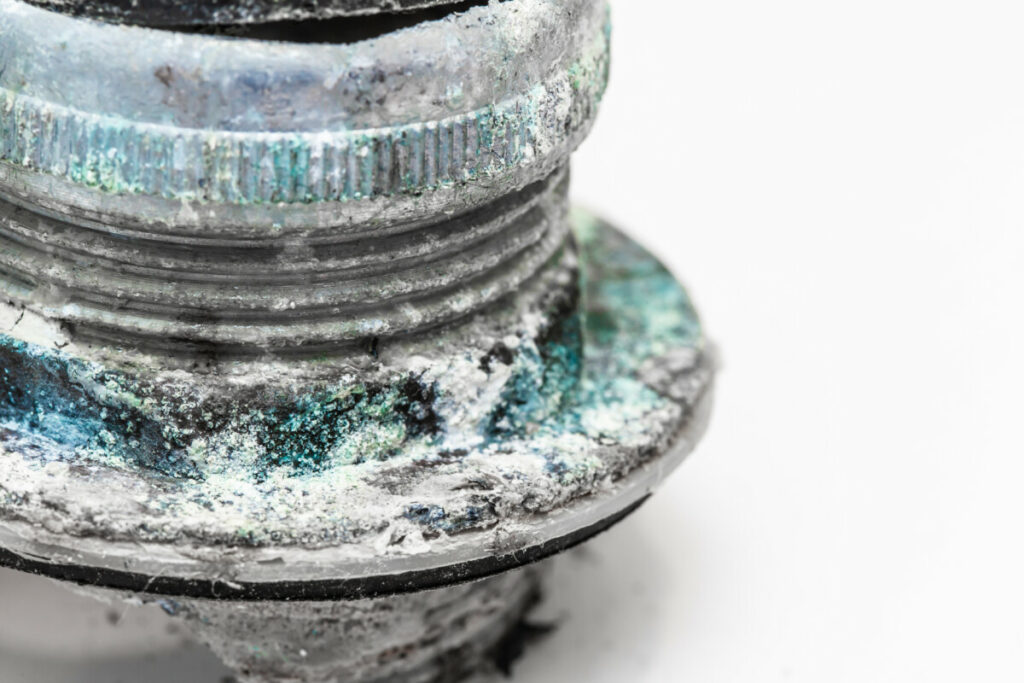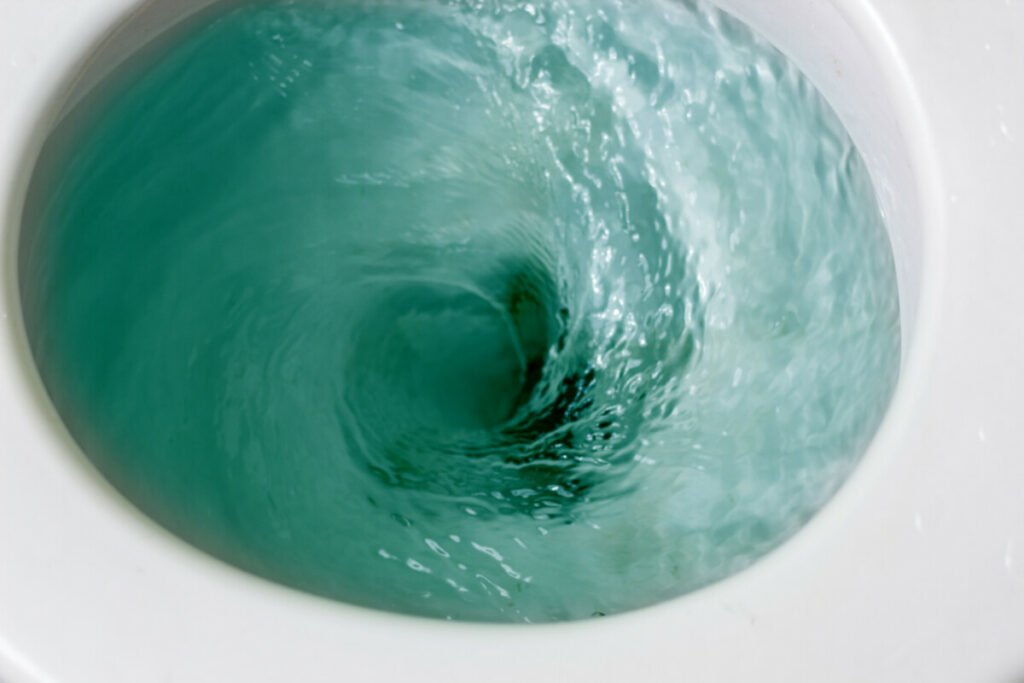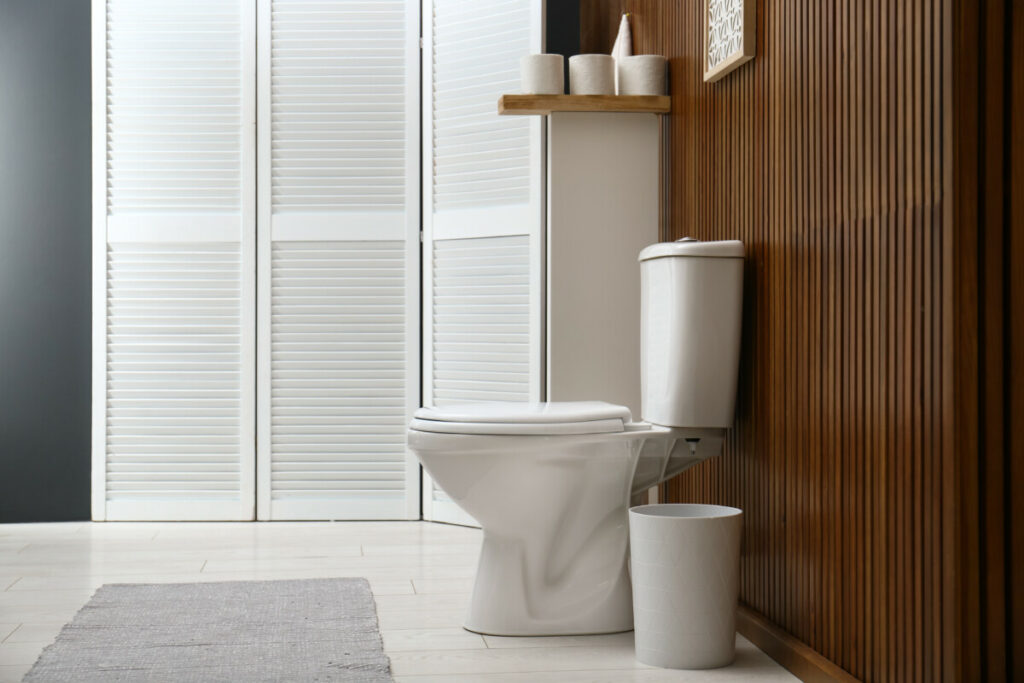This is Why Your Toilet Water is Blue – Find Out!
Last Updated on September 15, 2022 by Alex Cubias
Blue is a beautiful color, but does it belong in your toilet bowl? That may depend on why it’s there, and what’s causing that pretty shade!
Blue water in a toilet bowl is an indication of copper corrosion. Copper corrodes in the presence of certain chemicals in the soil or pipes and leaves a blue or green residue that can leak into the water system. Blue cleaning products can also turn the water blue temporarily.
Blue water can tell you a lot about your plumbing system and what’s in your water. The science behind it is pretty simple! Let’s talk about it in more depth.
Why Copper Turns Water Blue

When you think of rust, you probably picture red dust. That’s because we associate rust with iron, which does turn red. Other metals, however, turn other colors when they oxidize. Copper turns blue or green. This is why the Statue of Liberty, which was made out of copper, is blue after years of copper oxidizing.
What is oxidation, and what causes it? Metals like copper react with other elements and make a new compound, rust. For copper specifically, sulfur causes the reaction. Airborne sulfur forms compounds with water vapor, and the new compounds from the sulfur and water vapor turn the copper blue. This is why rust occurs in places with a lot of water. The water vapor that causes the reaction means places like water pipes are more likely to have copper corrosion.
It doesn’t always occur in pipes because the sulfur compounds are needed to first react with the water. That’s why your toilet isn’t blue all of the time. When the sulfur can access the pipes and plumbing, any copper will start to oxidize, and the rust on the copper will leach into the water system and turn water blue. It may also have a slight metallic smell and would have a metallic taste to it too, although you’re probably not tasting your toilet water!
Copper eroding isn’t the only thing that can turn toilet water blue, however. Lots of cleaning products have the same effect! Toilet cleaners or tablets used to sanitize the toilet bowl and clean the pipes can turn the water blue, though only temporarily until all the cleaner has been rinsed away with the toilet water.
The cleaner will usually have a chemical scent to it and will disappear after a few flushes. It will also only affect the water in that specific toilet bowl.
What Causes Copper Corrosion?

We know that water vapor and airborne sulfur can cause copper to corrode, but copper does not erode every time it comes into contact with these chemicals. Certain conditions cause copper to erode.
Copper actually has a naturally occurring film that prevents it from eroding. So, something has to destroy that film to make copper corrode and turn blue. This is usually a corrosive chemical that “burns” away the outer coating. These chemicals are found in the soil that the copper pipes come into contact with.
Acids and bases are both culprits, as both can wear away at the metal. Acids consist of several chemical compounds, not just one. There are weak acids, like lemon juice, and strong acids, like hydrochloride acids. Soil can sometimes contain these weaker acids, and those acids will wear away copper’s protective coating and cause it to become susceptible to corroding.
Bases are another group of compounds and are built differently than acids but can have the same effect. One example of a base is ammonia, which is caustic and can “burn” away at some materials. High amounts of ammonia in the soil can weaken the copper.
Besides the chemical compounds, copper pipes can come into contact with that make them corrode, faulty manufacturing can also cause the same problem. Metal can expand and contract when it gets hot and cold, so when metal pipes are installed, they’re supposed to be installed with that in mind. If they aren’t and don’t have that space, they can wear away and become much weaker and more susceptible to corrosion.
Faulty installation can also mean the pipes just aren’t as strong and don’t have the tough joints it’s supposed to, and that can make the copper wear away. So, blue water can be an indication that the pipes are not just made of copper, but aren’t built the way they should have been.
Effects of Blue Water and What to Do About It

Blue water in your toilet bowl isn’t concerning, but you don’t want those chemicals in your drinking water. Copper in small amounts is actually good for you, but you should be getting that copper from foods like nuts and leafy vegetables where it is only present in safe amounts.
Too much copper, which can enter your system through contaminated water, can make you sick. A little bit of copper poisoning can make you sick to your stomach, and long-term copper poisoning can cause liver and kidney problems.
Your local water systems should monitor copper levels and keep them at a reasonable level, but blue water in your toilet bowl still means you should keep an eye out for copper in your water.
If you are concerned about copper in your water from copper corrosion, run your taps for a couple of minutes before drinking out of them to rinse out any copper buildup. You might also want to clean your pipes from that copper corrosion residue to deal with the actual problem.
If the water is blue because of cleaners, don’t worry about it! The cleaner isn’t going to end up in your drinking water, and it might not smell great or give you a headache if it’s too concentrated, but those are your only concerns. Air out the bathroom and flush the toilet a couple of times to dilute it if it really bothers you.
Related Article: 4 Reasons Your Toilet Water is Blue
The explanation behind that lovely teal in your toilet bowl is pretty simple! Blue in your toilet may prompt you to inspect your pipes for blue stains and buildup, but it’s not because it’s radioactive! Chemistry just occurs in places we don’t often think about, and sometimes does so with the prettiest colors!